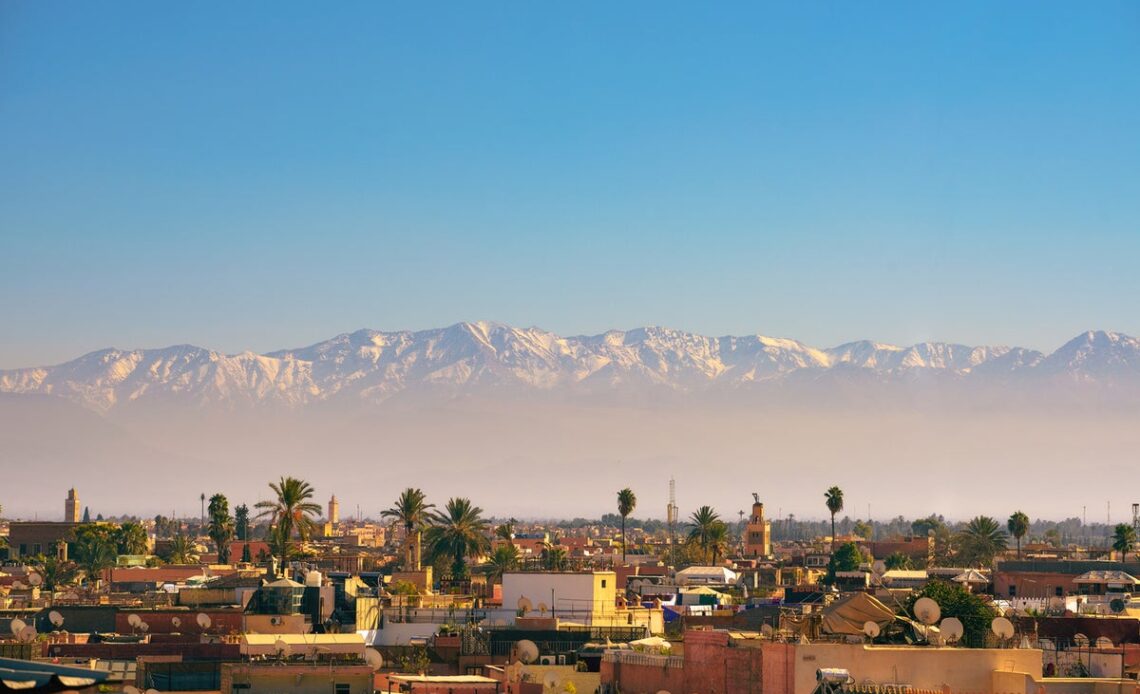It takes less time to travel to Morocco on the plane than it does to go from Edinburgh to London on the train – and you’re catapulted into a dazzling mix of sunshine, souks, desert, mountains and ocean. In March, you can be climbing the snow-covered Atlas mountains in the morning and riding a camel through the Agafay desert in the afternoon, or kite surfing off the coast of Essaouira at dusk.
Morocco packs in an enormous amount of diversity. The culture is a mixture of Arab and Amazigh (Berber) with a dash of French. It has a rich history, from the romantic red fortress of Ait Ben Haddou, made famous by Gladiator, to dinosaur footprints embedded into the mountain sides.
Moroccans are expert craftspeople and you can buy beautiful handmade goods at a great price. Meanwhile, Moroccans’ hospitality is legendary. In Morocco they say, “Guests are from God.”
Current travel restrictions and entry requirements
To enter Morocco, passengers are required to have had three vaccine doses (or have had their second vaccine dose within the previous four months) or present proof of a negative PCR result from a test taken within the 72 hours before boarding. Children under the age of 12 are exempt from these requirements. Masks are no longer worn on the ground.
Best time to go
Morocco can be visited all year round as it has such a diverse range of microclimates. However, July and August are extremely hot in most parts of the country, excepting the Atlantic coast where breezes keep it cool. The best times to visit are April/May and October/November. It can get cold in winter, even though it’s usually sunny. Tourist hotspots, like Marrakech, can get busy during peak periods.
Top regions and cities
Marrakech
Marrakech is a fantastic place to start your trip. It’s central, so you can get out to other regions and cities. The city has been an important trading hub for centuries, linking Africa to Europe. That heritage is encapsulated by Jema El Fna, the main square, where the snake charmers play their flutes and you can eat snails or drink fresh water melon juice from a food stall. There are plenty of sights – including the Bahai Palace, the Marjorelle gardens and Yves Saint Laurent museum – plus great restaurants and a thriving club scene.
Fes
Far less touristy than Marrakech, Fes was the Islamic capital of north Africa and has 300 mosques in the city. It has the largest covered souk in the world (following the destruction of Aleppo in Syria), and you feel like you…
Click Here to Read the Full Original Article at The Independent Travel…
